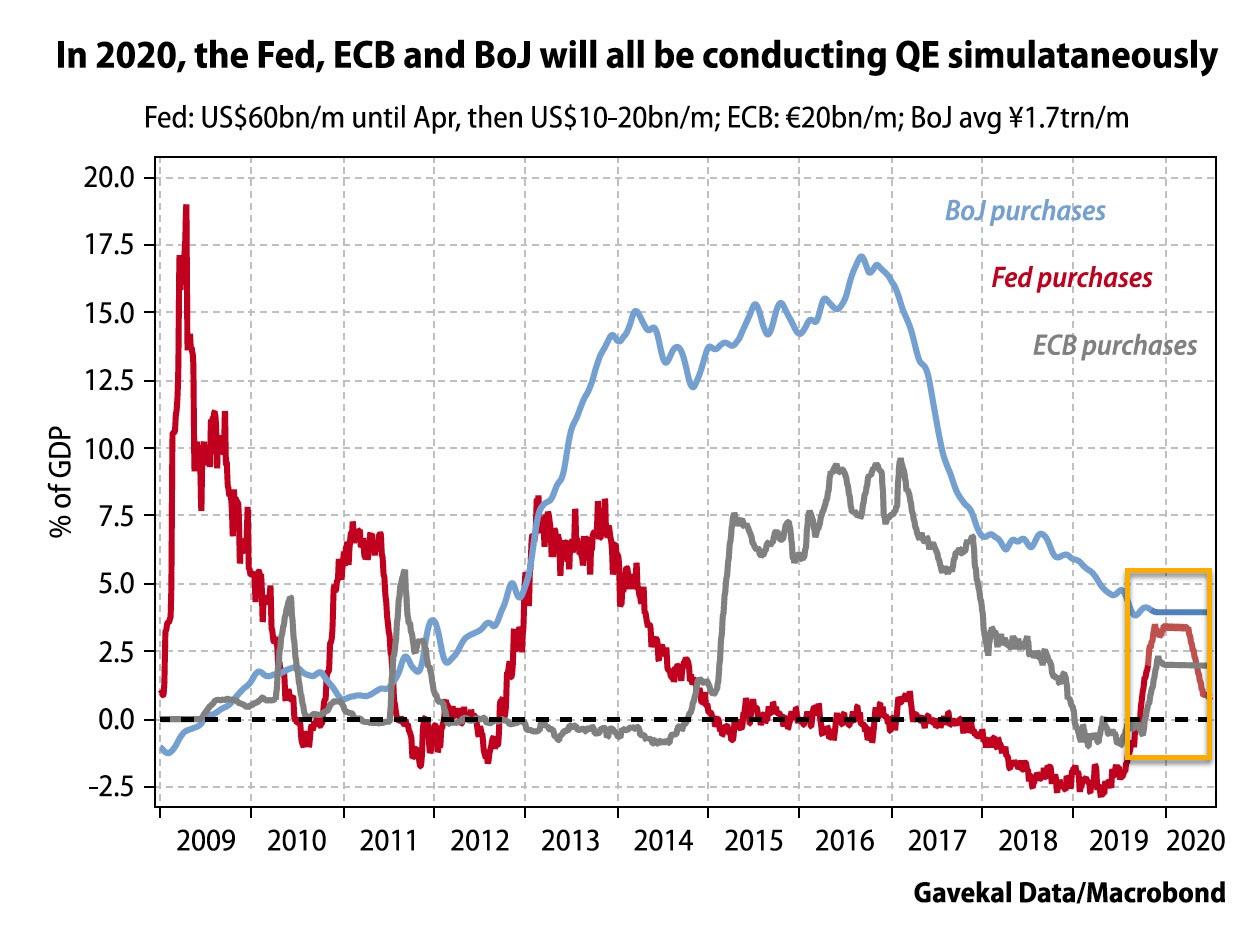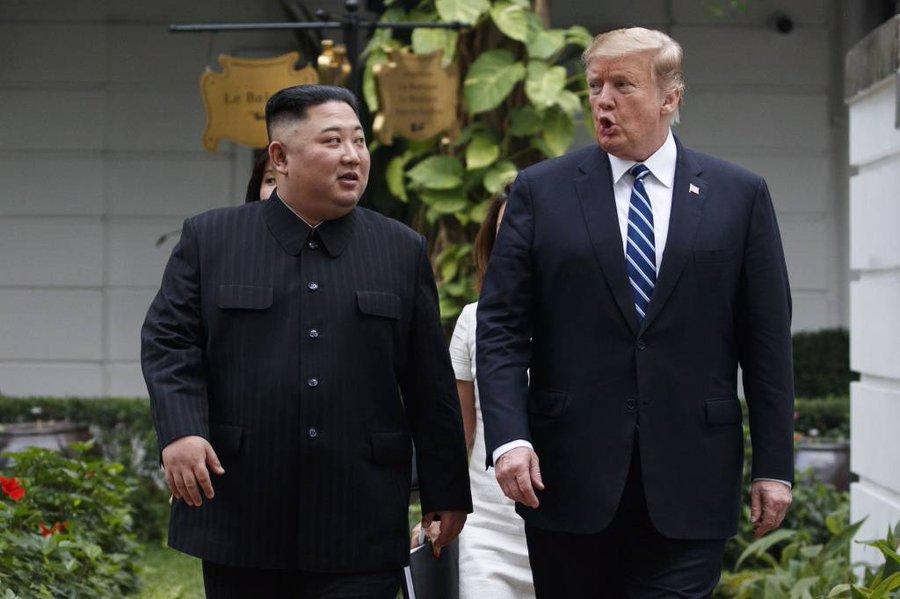Macro Hive: “When We Fall Back Into A Recession And Real QE Returns, Watch Out”
Submitted by George Goncalves of MacroHive; Goerge is a twenty years fixed income markets veteran. Over that time he has covered rates, structured products and credit. He worked both on the buy-side and sell-side.
Fed’s Challenge To Administer Liquidity Into Year-End And Beyond
Even with hundreds of billions of dollars in new liquidity created out of thin air, it’s too soon for the Fed to signal a clear coast for repo markets. On the one hand, through heavy liquidity dosages the Fed has doused the fire; but on the other hand, we do not know if that dosage was too much or too little. The true test still lies in the weeks around year-end.
Fed Fears the Worst
The Fed has not idled in wait of potential new flare-ups. Since our last update on Fed policy dynamics, it has rolled out more repo operations and added 42-day calendar repos to help provide funding over the year-end turn. These operations have seen nearly double the amount of submissions versus the offering size of $25bn each. This demonstrates that primary dealers aren’t taking any chances either.
In addition to daily and term repo operations, the Fed has purchased over $100bn T-bills for its SOMA portfolio since October. These so-called ‘not QE’ asset purchases, along with the repo operations, have led to the Fed’s balance-sheet growing at a faster clip than that experienced in the first twelve weeks of QE2 and QE3 (Chart 1). Luckily it’s not QE though, right?
If that’s true, we come to our primary question: what comes next in 2020? But before we brainstorm that and the implications thereof, we should take stock of what has changed in the key Fed balance sheet categories.
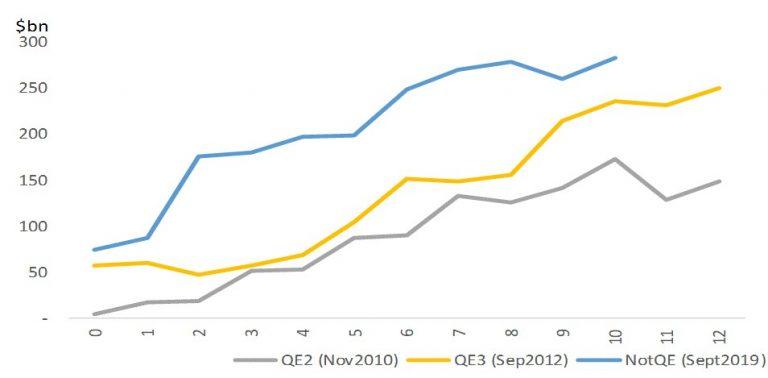
The Balance Sheet Changes Since September
As of November’s last week, the Fed’s balance sheet has grown in size by nearly $300bn since the repo flare-up. This speed goes to prove a concept well known in the marketplace: the Fed tightens slowly and eases quickly. In less than three months the Fed unwound basically half of QT.
The Fed has imperfect control over its liabilities, so investors should never assume a one-for-one relationship exists between asset purchases and the expansion of excess reserves. For starters, currency in circulation has been on cruise control since the financial crisis (rising at ~6% a year). But it’s the non-reserve items, foreign central bank (FCB) reverse repos, and Treasury general account (TGA) that make it challenging to predict reserve trends.
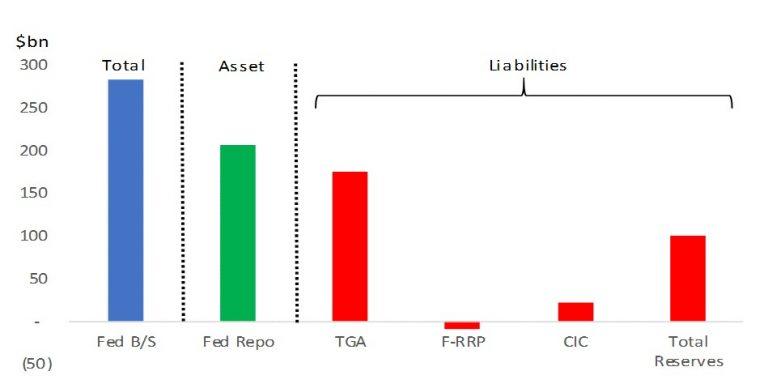
As seen above (Chart 2), total reserves have increased. But the TGA grew much more in total (in fact, the first week post 9/11 was the week that led to the reserve shortfall/repo spike as TGA expanded). It’s as if most of the Fed repos since that period indirectly provided short-term cash to the Treasury as dealers are able to purchase more USTs and ‘temporarily’ fund them with the Fed.
Now, it’s not that simple and there is overlap with the T-bill purchases which are producing more permanent excess reserves. Nonetheless, the amount of Fed repos nearly matches the growth in TGA. If the Fed had not expanded, its balance sheet there would have been more reserve draining because UST issuance would have mopped up cash needed to restock the TGA. Meanwhile, FCBs have pulled some money from the Fed and are providing relief by reducing their F-RRP allocation.
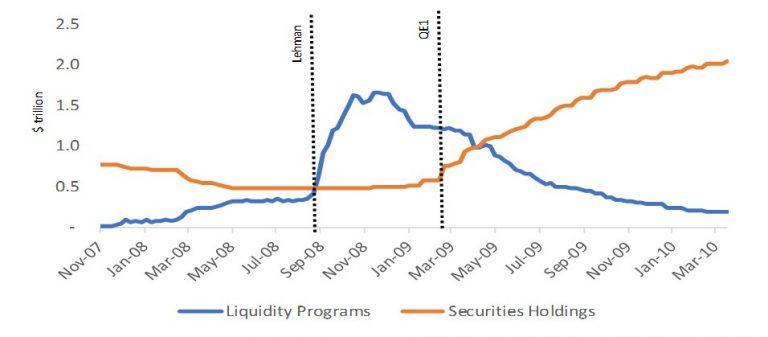
The Hand-off From Repo to ‘Not QE’ Reserve Growth
The effective Fed funds rate is back under control as are repo rates for the most part. That said, there is the occasional drift up in rates and the year-end turn is trading hundreds of basis points above the Fed target. The rest of this month could still see further pressures build as dealers pull back balance sheet usage and shy away from Fed term repos. Dealers will also aim to run a tight ship and will likely operate one day at a time in December.
But here is the tricky part (and another example of falling into a false sense of security). Clearly with the Fed on notice and providing a laddered safety net of repo liquidity, this year-end should theoretically be better than last year. And once we turn the calendar into 2020, commercial banks should start to open up their balance sheets and so Fed’s repo should decline as well.
The 2020 Path
So back to our main concern: 2020. Assuming there isn’t something more nefarious going on in the banking system by some point in early next year, Fed repo assets should decline in size. That said, the handoff from temporary liquidity to ‘not QE’ T-bill purchases may end up being more abrupt than risk markets are comfortable with.
Case in point: as seen in Chart 3, in the months after the initial spike due to Lehman, some of the Fed’s temporary liquidity programs started to see less usage as the panic subsided. This led to actual reserve declines as QE1 took some time to replace them. On a smaller scale, there is risk of a similar sort of repeat in 1H20. For example, if repo usage dropped to normal levels (i.e. as they were used pre-crisis), repo assets at the Fed could drop by over $200 bn (it would take over 3 months to replace those reserves via T-bill purchases).
Curve Could Steepen
Further complicating matters, if the Fed only buys T-bills they may end up enriching enough to encourage money market funds to start using the RRP again (which would drain reserves from banks). If that were to occur, the Fed would likely need to start buying out the curve and buy less T-bills (maybe via a curve control process through 5s). At that point they would need to stop their line that their purchases are “not-QE” (it would clearly be QE). This would favour staying with steepeners outright and/or on a forward basis as the front part of the curve (eg 2ys) would start to get depressed by this QE.
One way the Fed could avoid having to morph the T-bill purchases into outright QE would be to figure out how to launch a standing repo facility soon. This would be akin to ‘QE on demand’ but more so for reserve expansion for banks whenever they actually need it. All of these moving parts highlight how difficult it becomes for a central bank that is increasingly active on providing cash and collateral to the marketplace.
Bottom Line: This all feels very technical but, unfortunately, it’s the world we live in since the Fed needs to provide reserves in ample supply to keep using the floor system to set rate policy. If and when we fall back into a recession and real QE returns, watch out. In many ways that is what risk markets are yearning for: forward expectations of QE. Meanwhile, as we wait the risk is that the Fed’s balance sheet can actually temporarily shrink before growing (slowly via the T-bill purchases). Such a scenario is not priced into most asset classes.
Tyler Durden
Sat, 12/07/2019 – 15:05
via ZeroHedge News https://ift.tt/2qzGEt0 Tyler Durden









